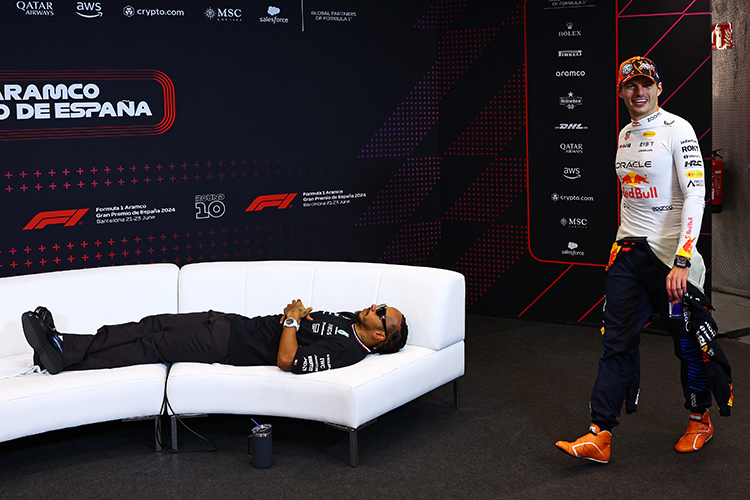F1 Driver Heights: Competitors on the Grid

Formula 1 World Champions: A legacy of racing legends
F1 Driver Heights: The Shortest and Tallest Competitors on the Grid
Explore the impact of height on F1 driver performance, the challenges taller drivers face, and the physical attributes that impact racing. Learn about the shortest and tallest F1 drivers in history.
In the high-stakes world of Formula 1, a driver's height and weight play a significant role in the performance of their car. Taller drivers face unique challenges as they must remain light for optimal car balance, while their physical attributes dictate necessary adjustments to maximize the car’s potential. This article dives into the impact of height on F1 performance, the tallest and shortest drivers in history, and how teams manage these physical constraints.
Impact of Height on F1 Performance
The Fédération Internationale de l'Automobile (FIA) works alongside taller drivers to refine car regulations, ensuring a level playing field. Taller drivers often face challenges, as smaller cockpits designed for shorter individuals offer better weight distribution and balance.
In 2019, the FIA introduced an 80kg minimum weight limit for drivers, including their helmet, race suit, and shoes. This change helped to equalize the competition, as prior to this, drivers faced pressure to maintain weights below healthy levels.
Tallest F1 Drivers on the 2024 Grid
The tallest drivers in Formula 1 as of 2024 are Esteban Ocon and Alex Albon, both measuring 1.86 meters (6 feet 1 inch). These drivers have openly discussed the difficulties of racing at their height, citing cramped cockpits and uncomfortable seating positions that affect their overall driving experience.
Albon has explained, "These cars are built to be compact. They are designed for drivers around 5'7" or 5'8". Taller drivers face challenges with legroom and seating posture, which affects comfort and performance."
Alongside Ocon and Albon, George Russell stands at 1.85 meters (6 feet) and Nico Hulkenberg is 1.84 meters (6 feet).
Shortest F1 Drivers
The shortest driver currently in Formula 1 is Yuki Tsunoda, who stands at 1.59 meters (5 feet 2 inches). Despite his smaller stature, Tsunoda has noted the challenges of fitting into F1 cars, requiring special seat and pedal adjustments for optimal driving position. He shared, "We added foam to the monocoque to raise my seat, and custom pedals to help me reach them comfortably."
Height Breakdown of Current F1 Drivers
| Driver | Height (meters/ft & in) | Weight (Kg/Lb) |
|---|---|---|
| Esteban Ocon | 1.86m (6' 1") | 66kg (145lb) |
| Alex Albon | 1.86m (6' 1") | 74kg (163lb) |
| George Russell | 1.85m (6' 0") | 70kg (154lb) |
| Nico Hulkenberg | 1.84m (6' 0") | 78kg (171lb) |
| Yuki Tsunoda | 1.59m (5' 2") | 54kg (119lb) |
Tallest F1 Drivers in History
Historically, the tallest F1 driver ever was Hans-Joachim Stuck, standing at 1.94 meters (6 feet 4 inches). Stuck's height made it difficult for him to fit into the small cockpits of F1 cars in the 1970s. Despite these challenges, he found success in touring and sports car racing.
Other notably tall drivers include Justin Wilson and Dan Gurney, both at 1.93 meters (6 feet 4 inches), who faced similar difficulties with fitting into the cars but still managed to make their mark in F1 history.
Shortest F1 Driver in History
The shortest F1 driver ever was Andrea Montermini, measuring at 1.57 meters (5 feet 1 inch). His F1 career spanned from 1994 to 1996, and although his stature was unusual for an F1 driver, Montermini went on to have a successful career in sports car racing.
Does a Driver's Height and Size Impact Performance?
Yes, a driver's height and weight significantly influence both performance and car engineering. Taller drivers may create more aerodynamic drag, while shorter drivers often fit more comfortably in the car's tight cockpit. Weight distribution also plays a key role, as a heavier driver may require adjustments to maintain the car’s optimal balance.
Can a 6-foot Person Fit in an F1 Car?
While it can be challenging for someone who is 6 feet tall to fit in a Formula 1 car, it is certainly possible with the right adjustments. The cockpit can be customized to accommodate taller drivers, though the limitations of car design must be taken into account.
How Tall is Lewis Hamilton?
Lewis Hamilton stands at 1.74 meters (5 feet 8 inches) and weighs 73 kilograms (160 pounds), which is typical for F1 drivers.
How Tall is Max Verstappen?
Max Verstappen measures 1.81 meters (5 feet 11 inches) and weighs 72 kilograms (158 pounds).
Why is Driver Fitness Crucial in F1?
F1 drivers must stay incredibly fit to cope with the physical demands of racing at high speeds for extended periods. This includes maintaining strength, endurance, and flexibility to endure G-forces and high temperatures during races.
Stay tuned for more F1 updates and insights on the physical demands of racing and how driver height impacts performance.
Up Next



